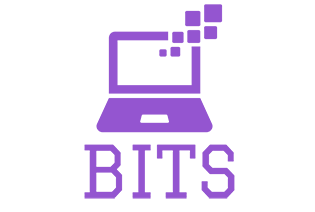A GUIDE TO DATA ARCHITECTURE
WHAT IS DATA ARCHITECTURE:
Data architecture refers to a set of goods and technologies that a company utilises to manage its data. But there’s a lot more to it. The processes for capturing, transforming, and delivering usable data to business users are defined by a data architecture. Most importantly, it identifies the people who will consume the data, as well as their specific needs. From data consumers to data sources, a strong data architecture flows right to left.
 https://statswiki.unece.org/display/hlgbas/2018+Modernisation+Updates
https://statswiki.unece.org/display/hlgbas/2018+Modernisation+Updates
The data architecture is entirely accountable for a company’s ability to migrate throughout the globe. If agility is required to avoid collapse during slow seasons or to profit from the unexpected popularity of a new product, the more complex the data architecture, the more capable the organisation will be to act.
As a vision or model of the eventual interactions between various data systems, a data architecture should establish data standards for all of its data systems. Because data integration necessitates data interactions between two or more data systems, it should be based on data architectural standards. A data architecture is a term that refers to the data structures that a company and its computer applications software employ. Data architecture includes descriptions of data stores, data groups, and data items, as well as mappings of those data artefacts to data characteristics, applications, and locations.
HOW IS THE DATA ARCHITECTURE DONE?
We will be able to determine which sorts of technologies to use based on factors such as data volume, variety, and speed of generation and processing. We’ll focus on the following categories among the many that exist:
Storage tools: These tools store data in both structured and unstructured formats and can integrate data from several platforms, such as the collection tools mentioned earlier, media platforms, and the company’s CRM databases.
Data collecting tools: These will assist us in extracting and organising raw data.
Data processing and analysis tools: These enable the construction of analyses, studies, and reports that assist operational and strategic decision-making by using the data that has been saved and processed to generate a visualisation logic.
These can vary depending on the company requirements, but ideally they should offer an integrative option to allow data to be used without manual treatment in one of the selected platforms. For example, if a dashboard needs to be developed using data from a repository, then a data viewing tool may be integrated with the database storage platform to enable data to be extracted from that database directly. If not, the data will have to be extracted, processed and constructed on a third platform to form the base of the dashboard, creating another complex step in the process, which takes more time and effort.
Data architecture characteristics:
⦁ Customer-centric: The modern data architecture begins with business users and their demands, rather than focusing on data or technology required to extract, ingest, transform and present information. Customers can be internally or externally and their needs vary according to their roles, their departments and over time. A good data architecture is constantly developing to meet new, changing information requirements for customers.
⦁ Secure: Modern data architecture incorporates security to ensure that data is available on a need-to-know basis as defined by the business. A good data architecture also recognises existing and emerging data security threats and ensures regulatory compliance with legislation such as HIPAA and GDPR.
⦁ User-driven: Previously, data was static and access was restricted. Decision-makers did not always get what they wanted or needed, but rather what was available. Business users can confidently define requirements in modern data architecture because data architects can pool data and create solutions to access it in ways that meet business objectives. A good data architecture evolves over time.
⦁ AUTOMATION: The friction that made legacy data systems difficult to configure is eliminated by automation. Processes that once took months to develop can now be completed in hours or days thanks to cloud-based tools. If a user requests access to different data, automation allows the architect to quickly design a pipeline to deliver it. As new data is gathered, data architects can quickly incorporate it into the architecture. And, in order to create an adaptable architecture in which data flows continuously, data architects automate everything.
⦁ COLLABORATION: Data structures that encourage collaboration are the foundation of effective data architecture. A good data architecture eliminates silos by combining data from all parts of the organisation, as well as external sources as needed, into a single location, thereby eliminating competing versions of the same data. In this environment, data is not bartered or hoarded among business units, but is viewed as a shared, company wide asset.
⦁ Enabling real-time data: Modern data architectures enable the deployment of automated and active data validation, classification, management, and governance.
⦁ Decoupled and extensible: Today’s data architectures are designed to be loosely coupled, allowing services to run multiple tasks independently.
To get to know more about how is it done or if you are stuck in between and need help then the customer friendly experts “Computer Repair Onsite (CROS)” are always there here we can get fast and perfect solution for every issue like this. You can easily contact “Computer Repair Onsite (CROS)” from their website here.

Principles of modern data architecture:
You can use the six principles of modern data architecture to navigate the quick, modern world of data and decisions regardless of whether you are responsible for data, systems, analysis, Strategy and results. Consider them as the foundation for data architecture that will enable your company today and in the future to run at an optimised level.
- PROVIDING INTERFACE: It is not sufficient to place data in one place to get a vision of an organisation driven by data. To make it easy for users to use this data, you need the interactions that make it easy for people (and systems) to benefit from a common data asset. This may take the form of a business intelligence OLAP interface, a data analyst SQL interface, an actual system target API, or R language for data scientists. It’s ultimately about letting your people work in the tools they know and the job they need to do.
- PROVIDING SECURITY: Instead of creating a downstream data storage and application web, the emergence of unifying data platforms such as Snowflake, Google BigQuery, Amazon Redshift and Hadoop required data enforcement and access controls directly on raw data. This approach to unified data security is brought about by the emergence of data security plans like Apache Sentry. Look for technologies that enable you to architect for safety and provide broad access to self-service without compromising control.
- PROVIDING ASSETS: As CIO explains, companies that begin with the view of data as a common asset ultimately outperform their competition. The companies ensure that all stakeholders have a complete view of the company instead of allowing departmental data silos to persist. And with “complete,” I mean a 360° view of customer insights, as well as the possibility of correlating valuable data signals from all functions, including production and logistics. As a result, business efficiency is improved.
- PROVIDING DATA: Some companies, like Amazon S3 oder Google cloud platform, are often putting up their lives as they give self-serving data access to raw data that is stored in these clusters or have invested in Hadoop or a cloud-based data-lake. Without the correct data cure (including the modelling of important relationships, the cleansing of raw data and the curation of key measures and dimensions), end users can experience frustratingly – which will significantly reduce perception and realisation of the underlying data. You have a better chance to realise the value of the shared data by investing in core functions for data curation.
- PROVIDING VOCABULARY: Enterprises can now create a shared data asset for multiple consumers across the business by investing in an enterprise data hub. However, it’s vital that users of this data analyse and comprehend it using a common lexicon. Regardless of how users consume or evaluate data, product catalogues, fiscal calendar dimensions, provider hierarchies, and KPI definitions must all be consistent. You’ll spend more time contesting or reconciling results without this unified vocabulary than driving higher performance.
- PROVIDING ORIGINALITY: When data is relocated, it has an influence on cost, accuracy, and time. Any IT organisation, or even a business user, will tell you that the less times data has to be moved, the better. A multi-structure, multi-workload environment for simultaneous processing of enormous data sets is part of the promise of cloud data platforms and distributed file systems like Hadoop. As workloads and data quantities increase, these data platforms scale linearly. Modern enterprise data architectures can save money (time, effort, and accuracy) by removing the need for additional data transfer. They can also improve “data freshness” and overall enterprise data agility.
ISSUES WITH DATA ARCHITECTURE:
On a daily basis, data architects encounter numerous obstacles. This paper will identify five significant challenges and offer suggestions for how to address them through data modelling:
⦁ DATA QUALITY: Accuracy, timeliness, completeness, consistency, relevance, and appropriateness of use are all components of data quality, according to the Data Management Body of Knowledge. Making excellent business decisions requires knowing that your data is current, correct, present, and usable. Poor data quality, according to some estimates, costs a normal corporation the equivalent of 15-20 percent of revenue and has a substantial influence on corporate efficiency.
⦁ BUSINESS FOCUS: Data isn’t merely a technical issue; it’s critical to the company’s success. Most firms would perform poorly or not at all if they didn’t have data. It must be acknowledged that data belongs to the company, and as a result, data architecture should be driven by the business. On the data strategy, the business and IT departments must collaborate. Emerging positions such as Chief Data Officer are crucial. The data culture in the firm must be driven by the business leadership. Data architects must be champions for data value and data quality, ensuring that everyone in the organisation comprehends the data and can explain and rationalise it in business terms.
⦁ COMPLEX DATA: The corporate data environment is likewise changing and becoming more complicated. Part of this is due to mergers and acquisitions, when the companies’ platforms and applications are generally distinct. Organisations are also increasingly buying and integrating a variety of solutions, which are frequently integrated with internally generated solutions. This is frequently made more difficult by the failure to decommission obsolete systems, which adds to the clutter. The growth of diverse systems must be contained and handled proactively.
⦁ ADOPTING TO CHANGES:Technology advances at a far quicker rate than techniques, posing even more problems to companies attempting to implement them. Databases and modelling tools’ underlying architecture has changed as well. Unstructured platforms, often known as schema-less platforms or “big data,” must be understood and effectively managed as part of an organisational portfolio. Improved integration skills are also required. Otherwise, businesses will merely repeat previous mistakes, such as application silos, albeit with new technology.
⦁ ADOPTING TO NEW METHODOLOGIES: When we look at the emergence of new methodologies and the changes in corporate culture that have accompanied them, we can see that there have been many different approaches throughout the years. A more rigid organisational structure with data modellers, programmers, and system analysts existed in the early days of traditional / waterfall data modelling procedures. Projects had strict timelines and activities, and solutions were delivered in a linear and time-consuming manner. Coping with changes was also tough, which resulted in even longer timescales. SOLUTION:
Because of the aforementioned issues, data modelling and metadata management are now more crucial than ever. The models and accompanying metadata are the only way to effectively comprehend and manage complicated data environments. It is impossible to monitor data quality without comprehension. A well-defined data architecture enables all of the aforementioned difficulties to be addressed, and it serves as a foundation for improving data quality, master data management, and data governance in general.
“BENCHMARK IT SERVICES(BITS)” one of the top most company offers a comprehensive suite of data modelling tools to address the challenges of data architecture not only for today, but also for the future, with enterprise scale capabilities such as business glossaries, data dictionaries, reverse engineering, forwards engineering, and cross-organisational collaboration. You can access to the website here.
This is the location where all data-related issues, such as data security, cyber security, data backup, and other hardware and software issues, are quickly fixed with 100% customer satisfaction. Here we may fix issues such as modem/router configuration, firewall configuration, VPN configuration, and other concerns.

